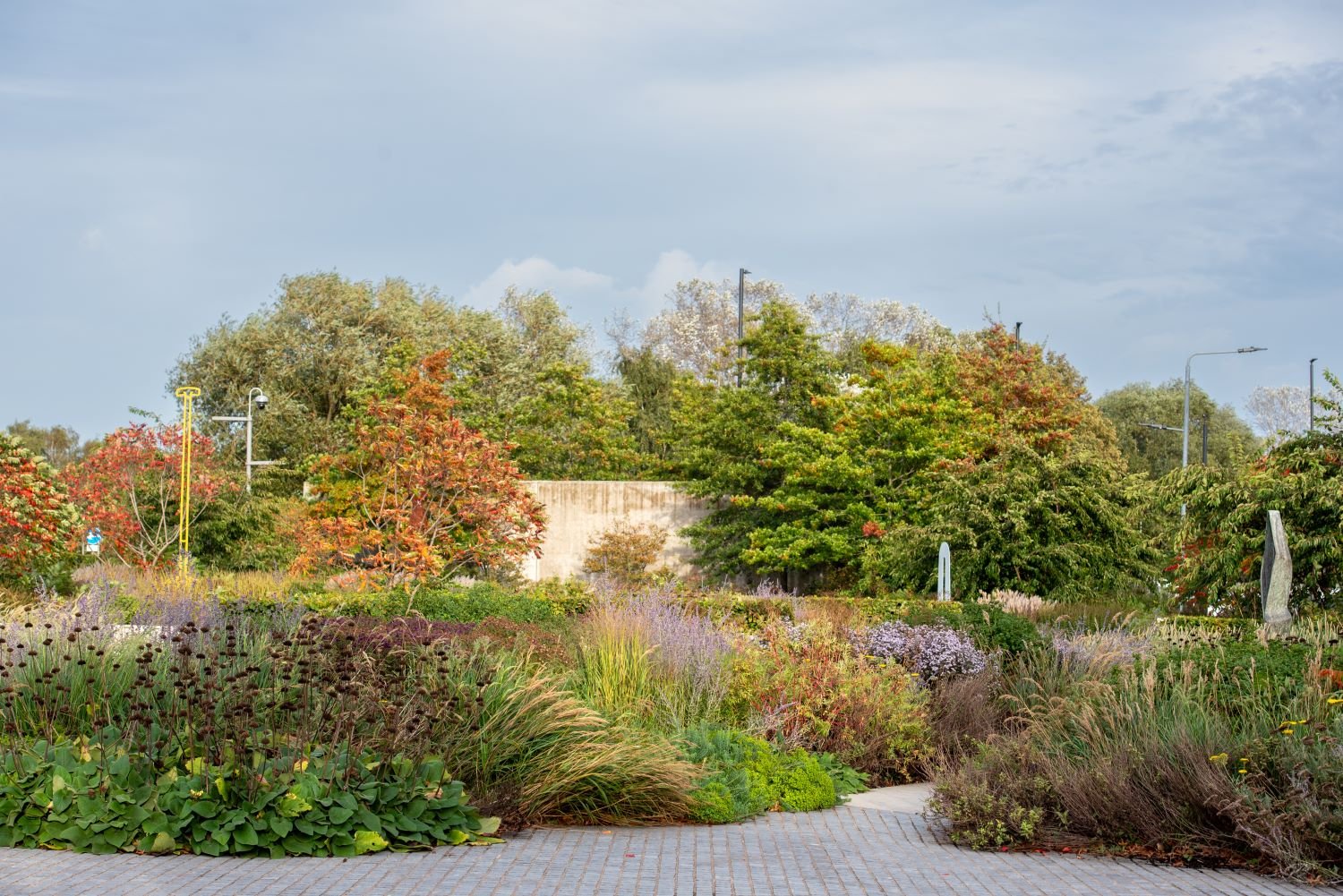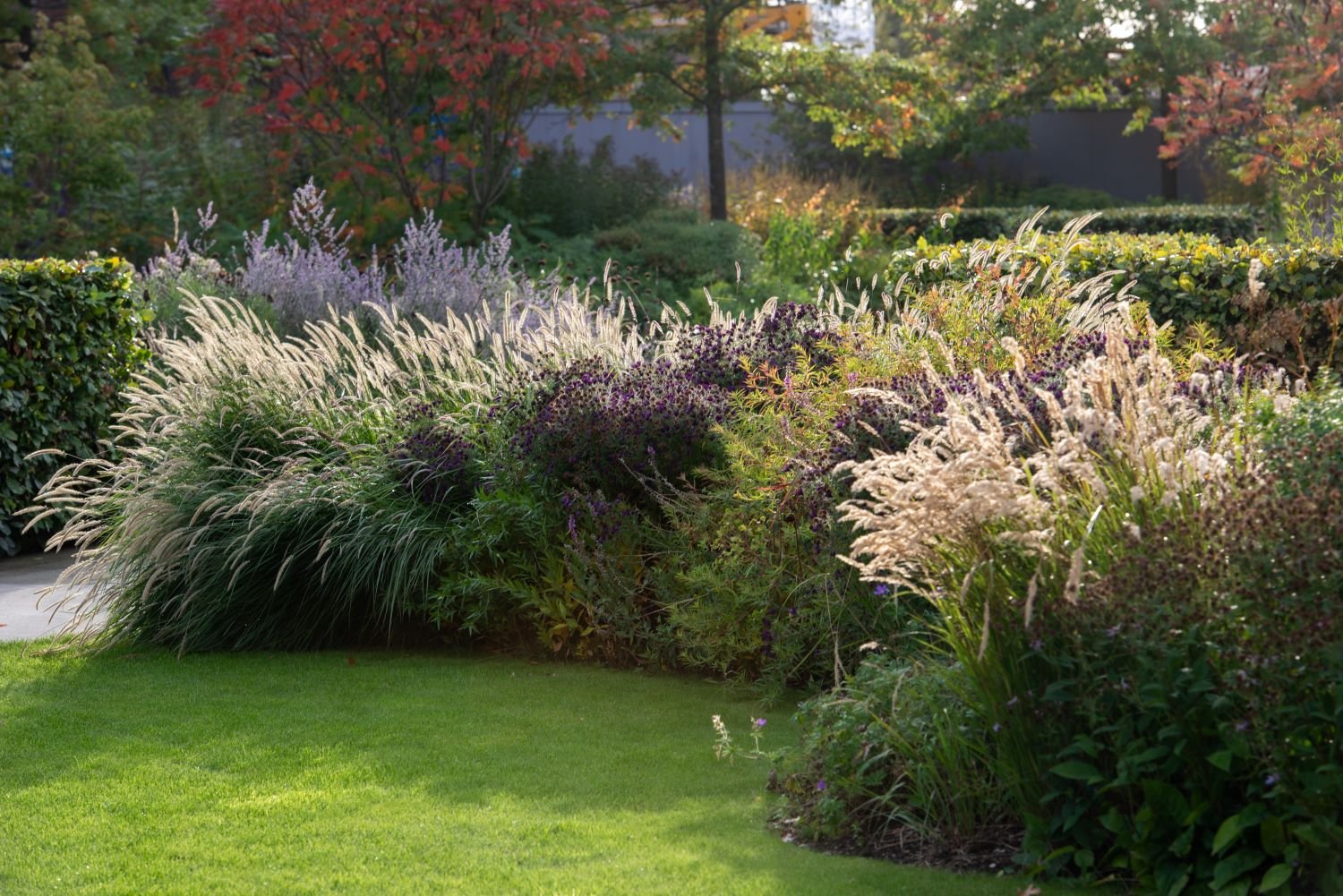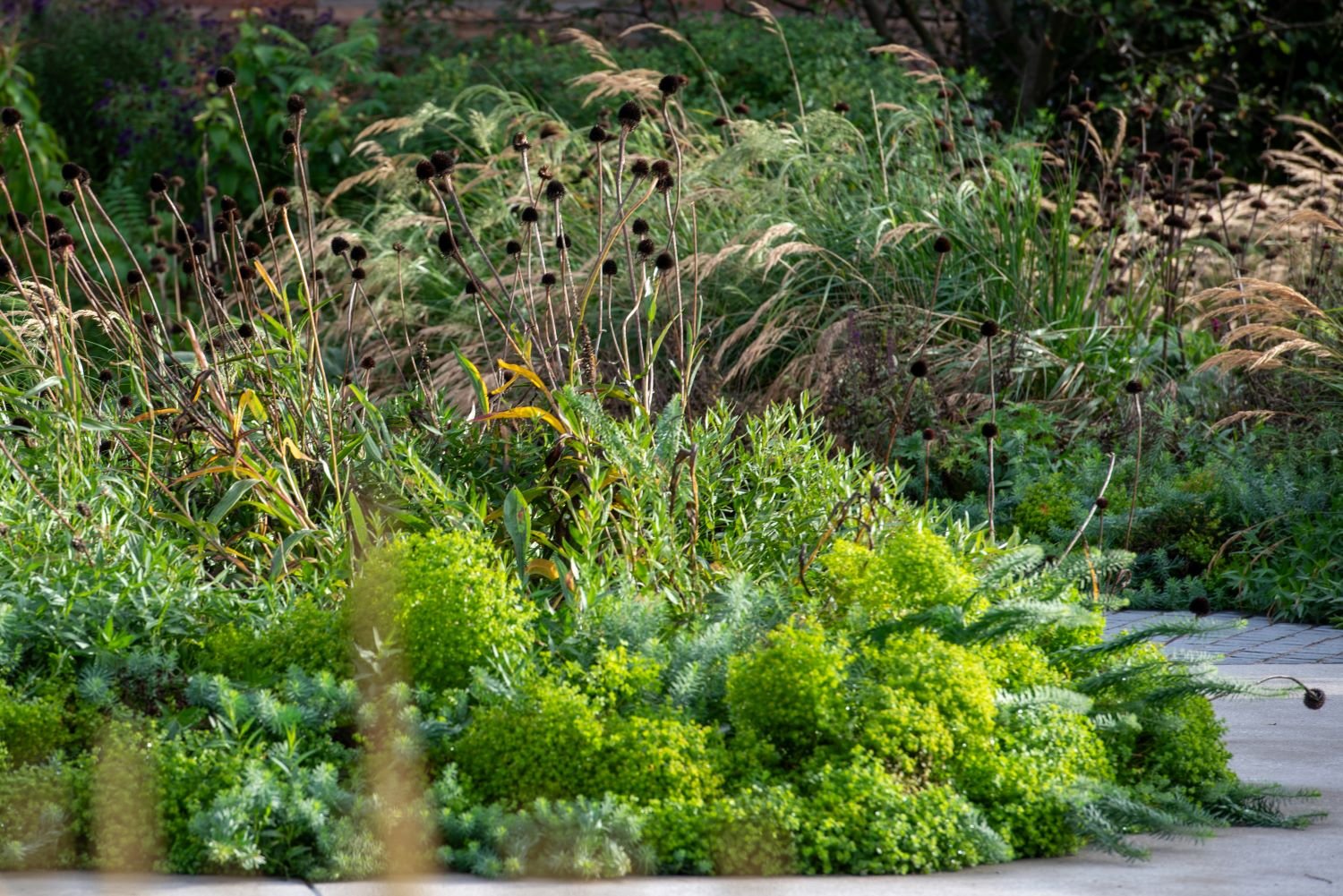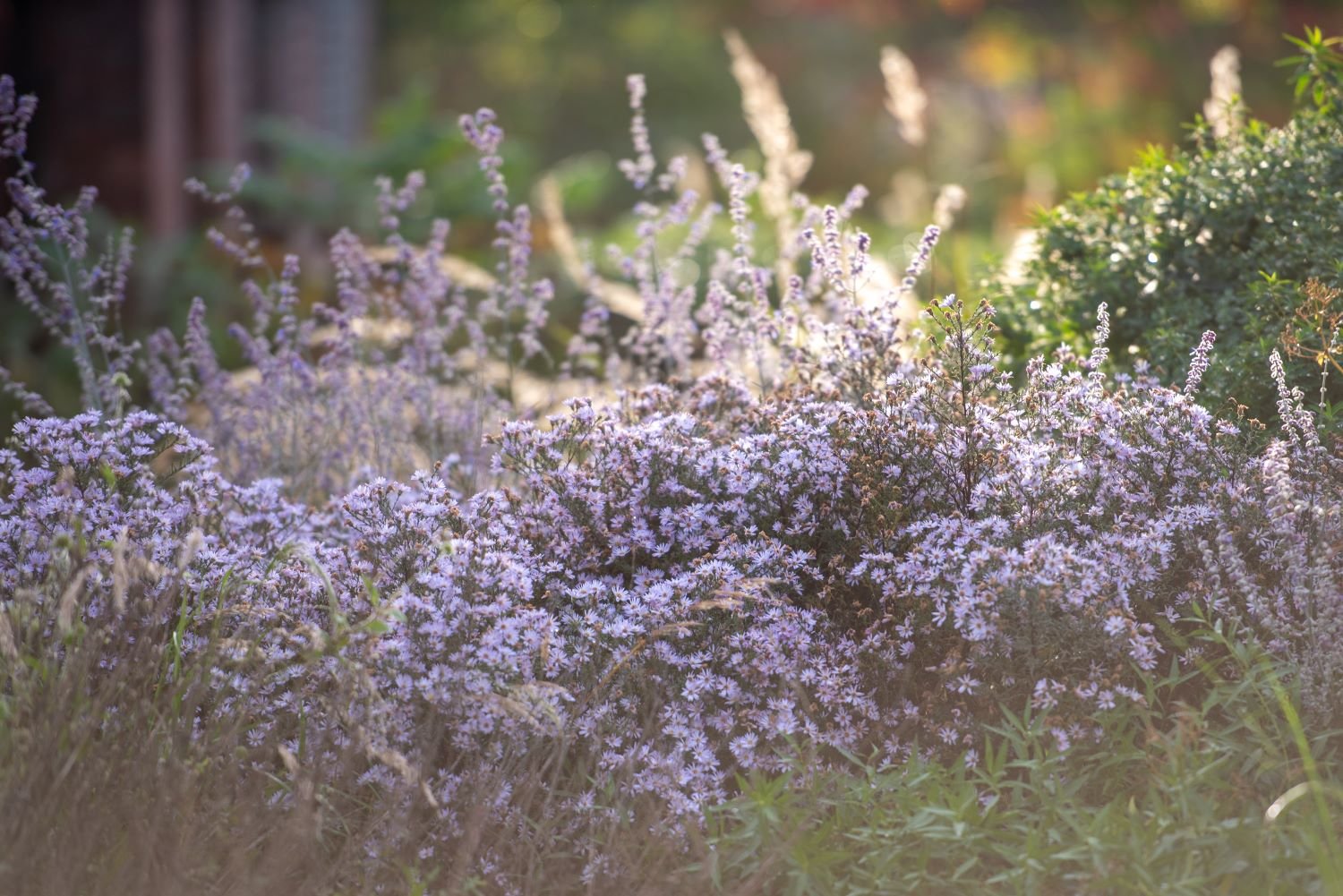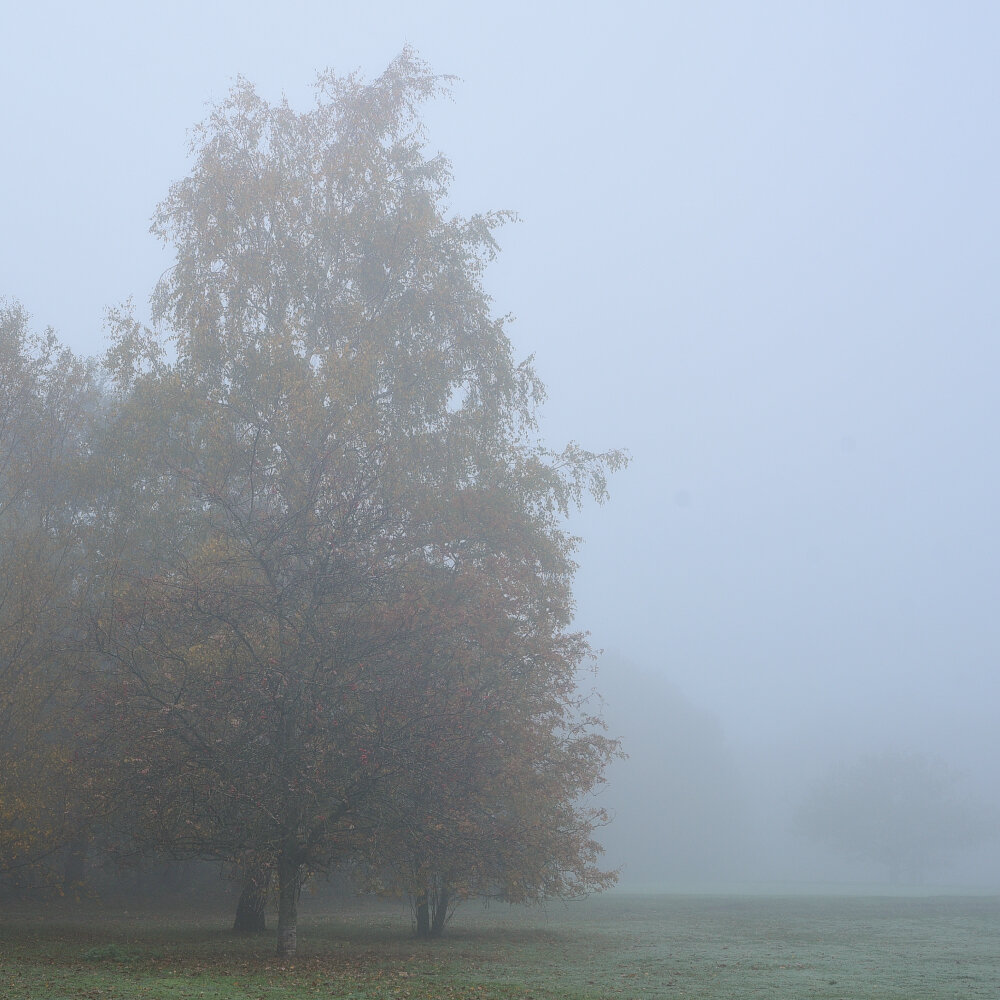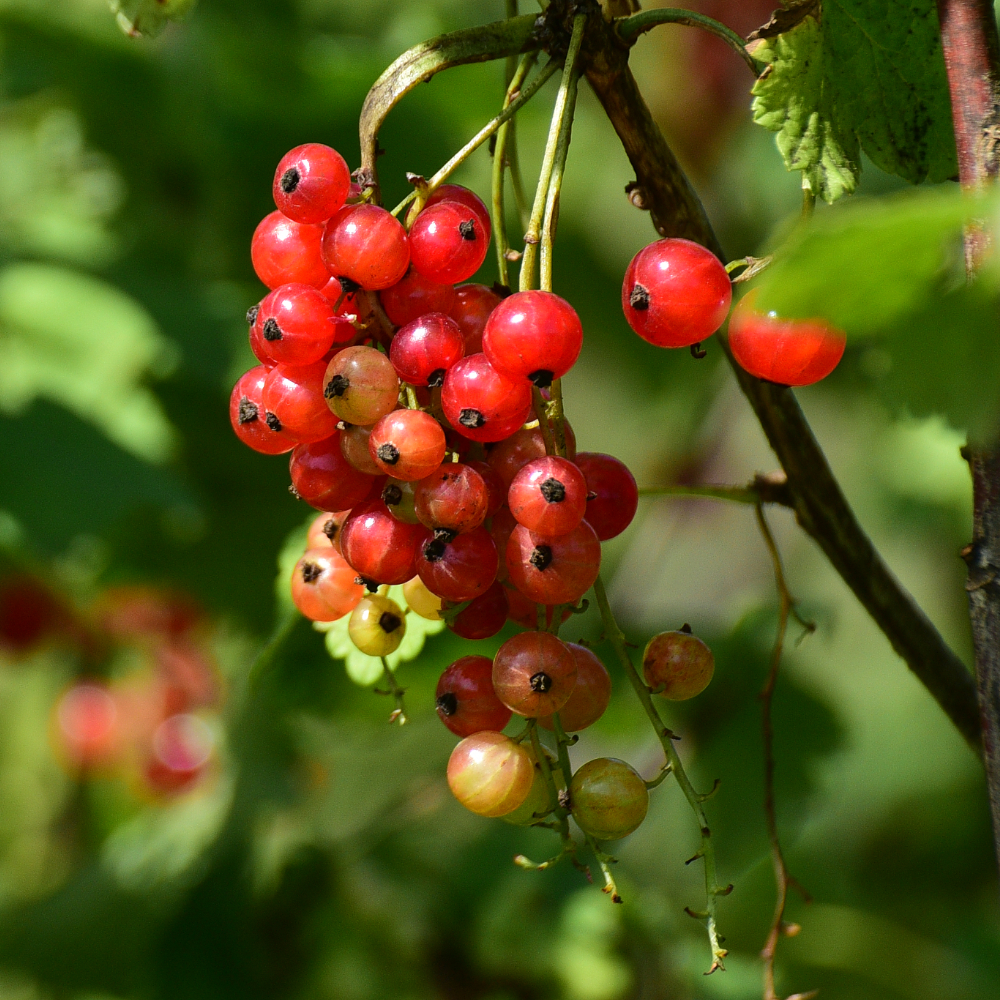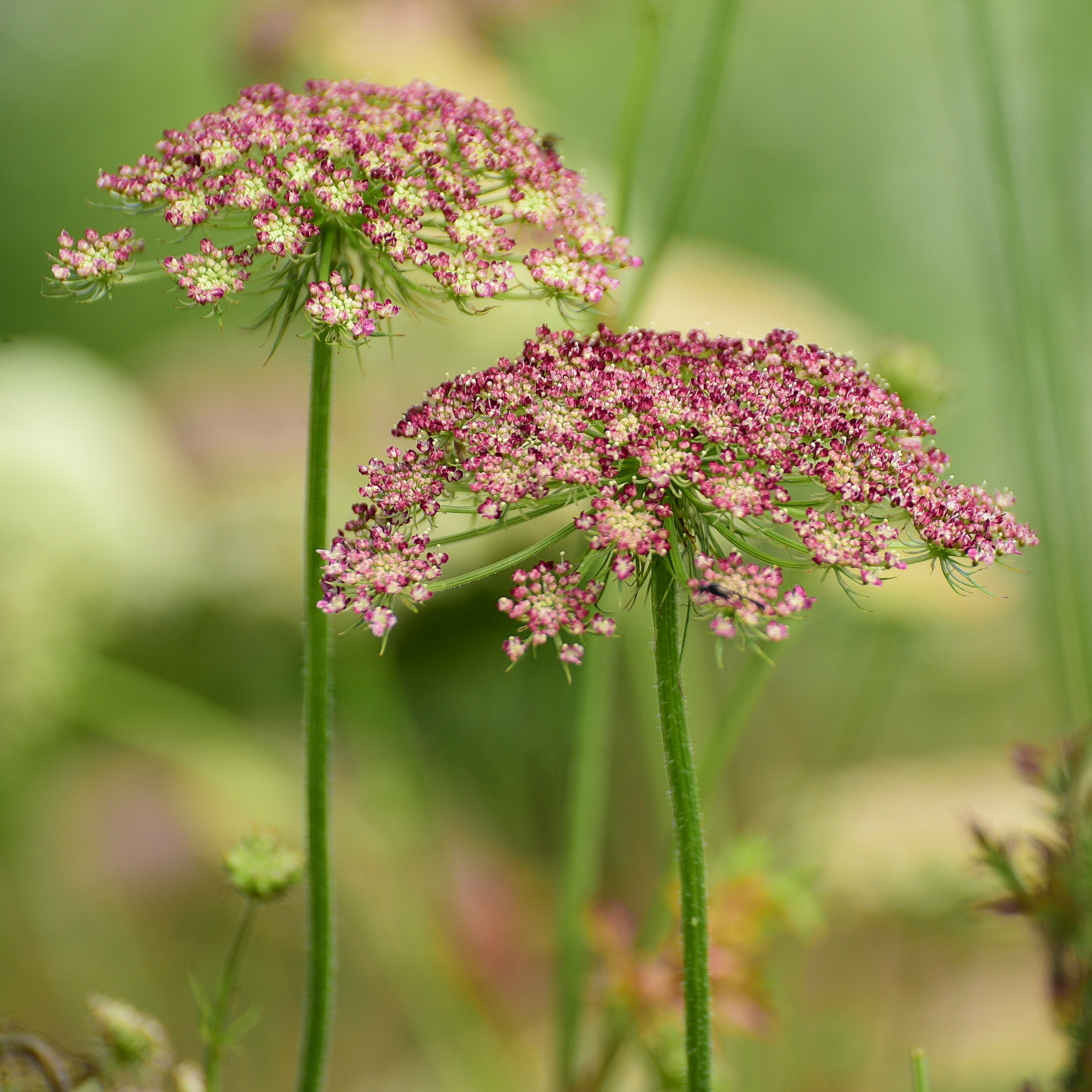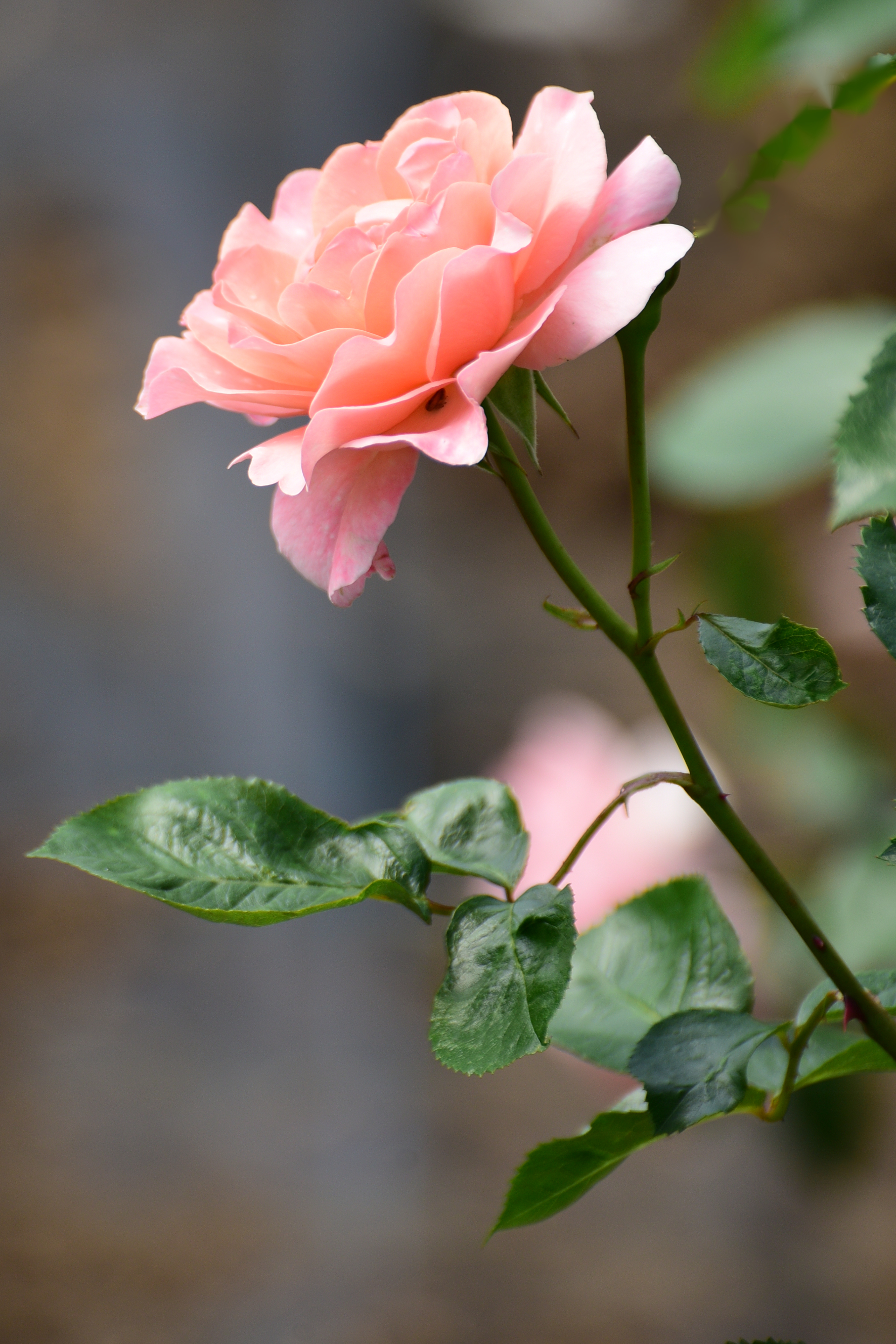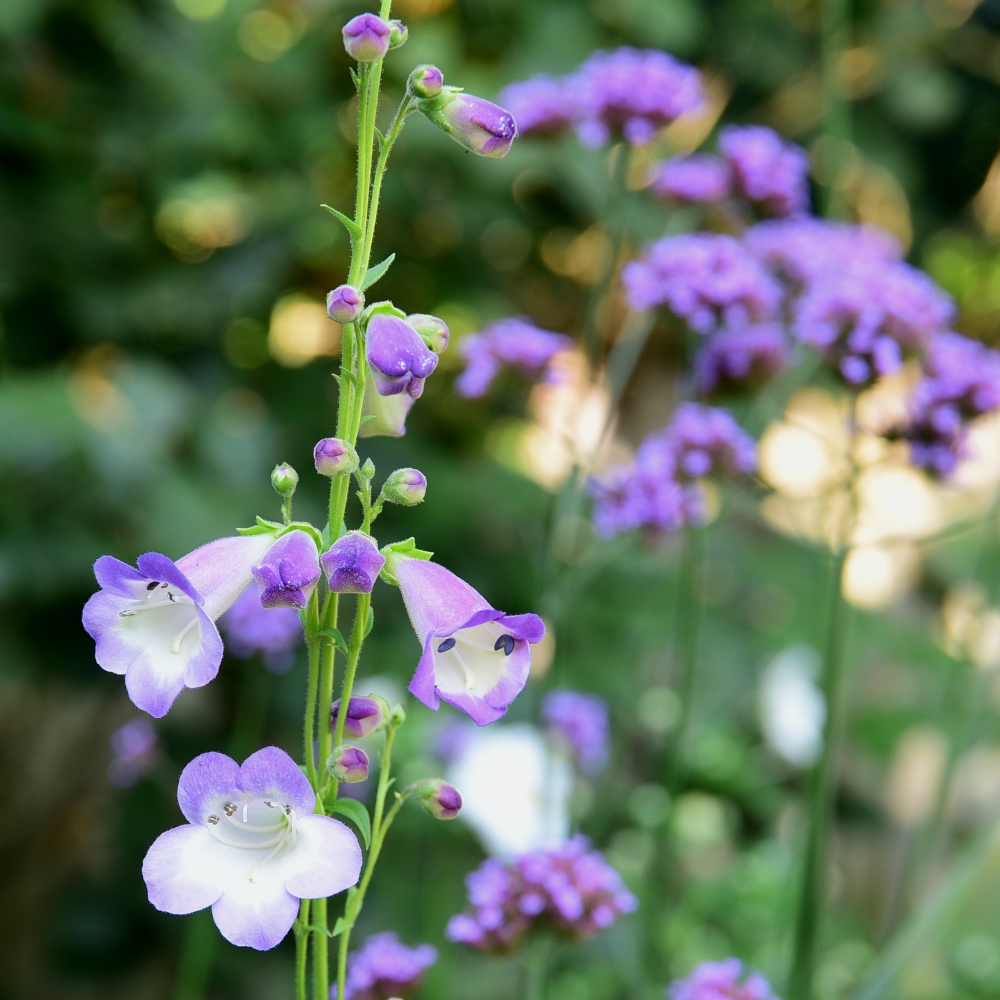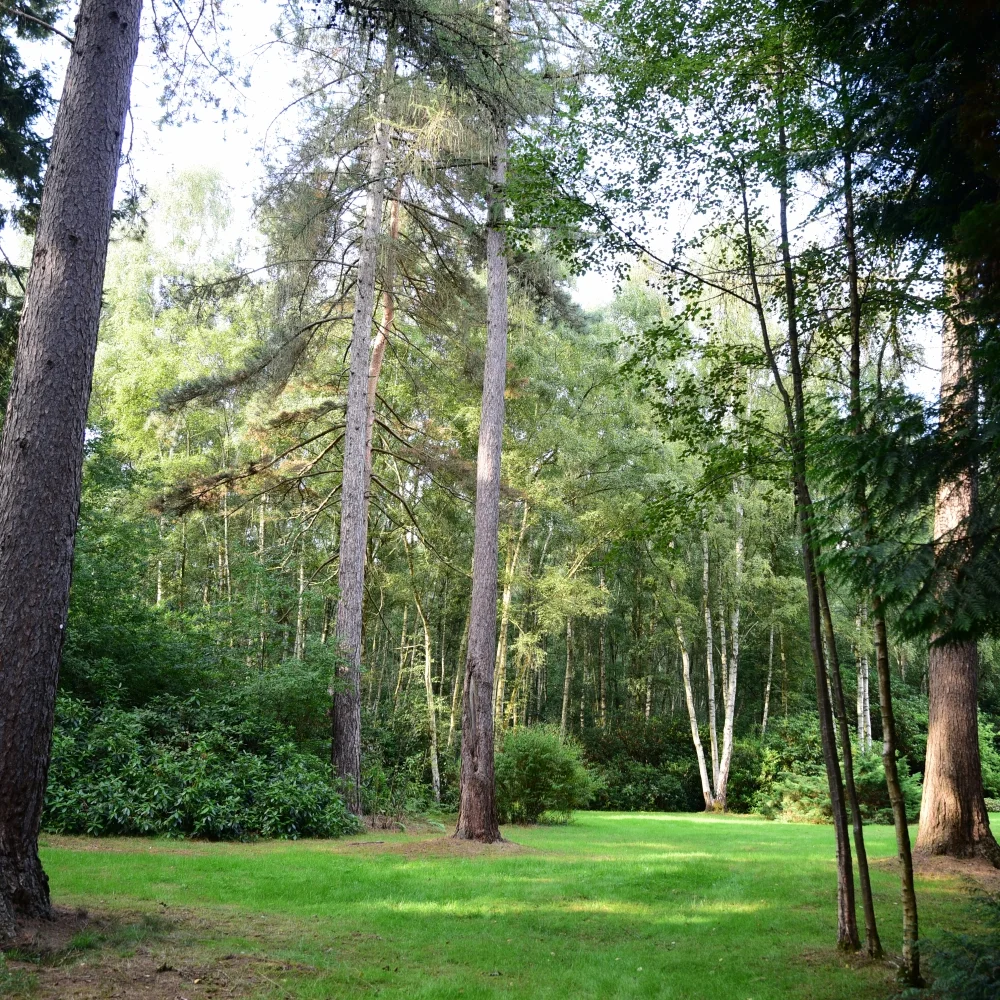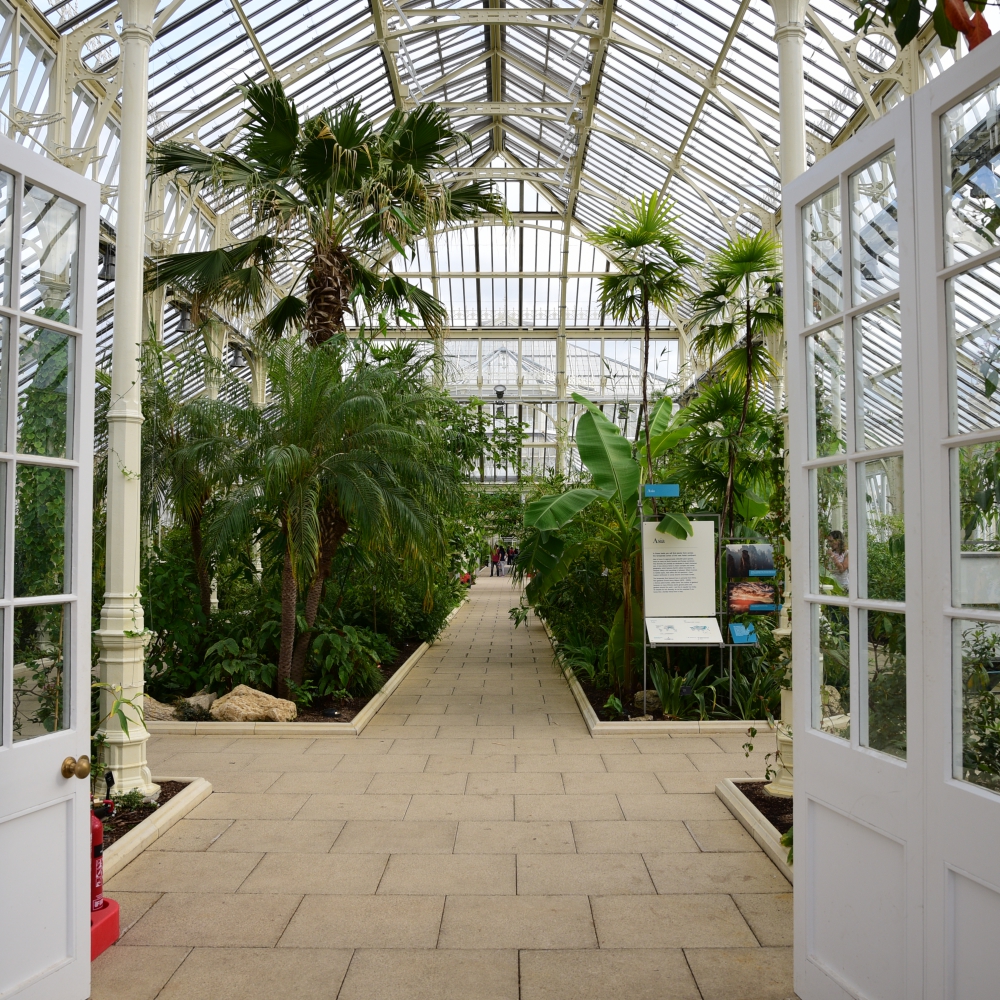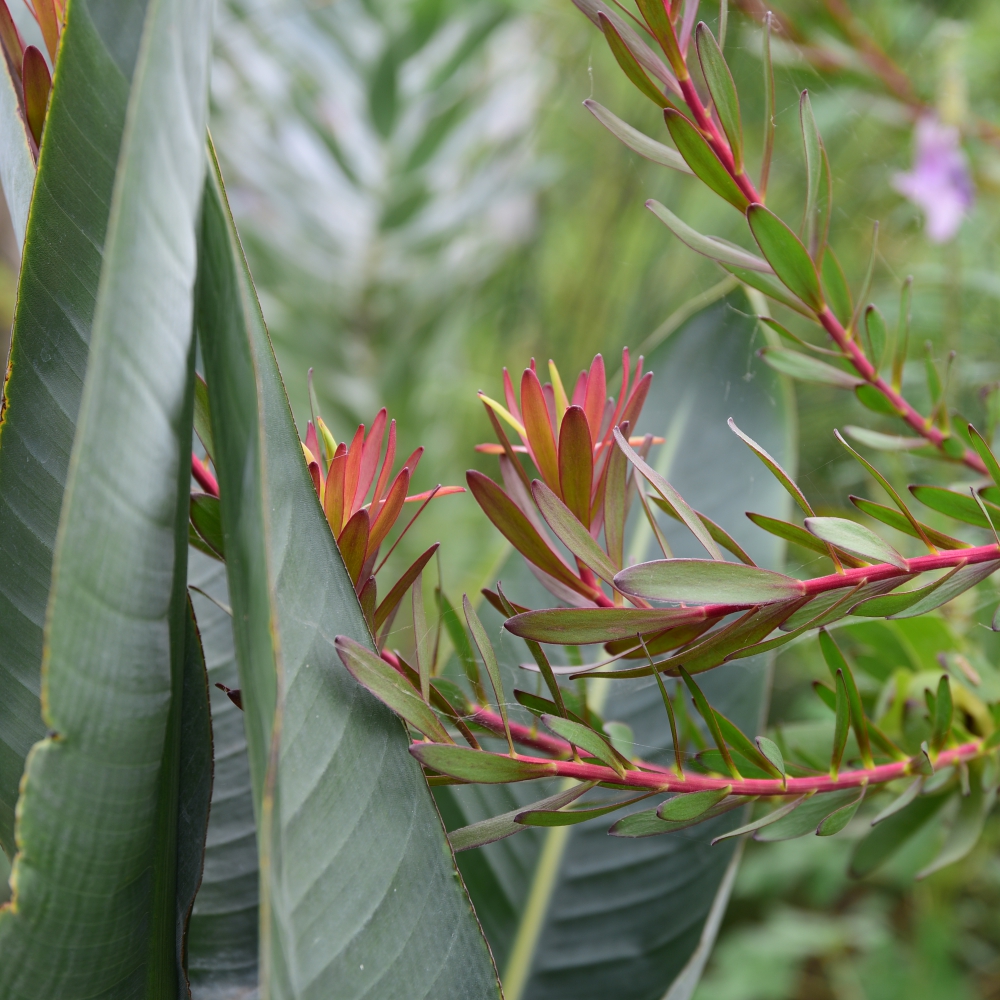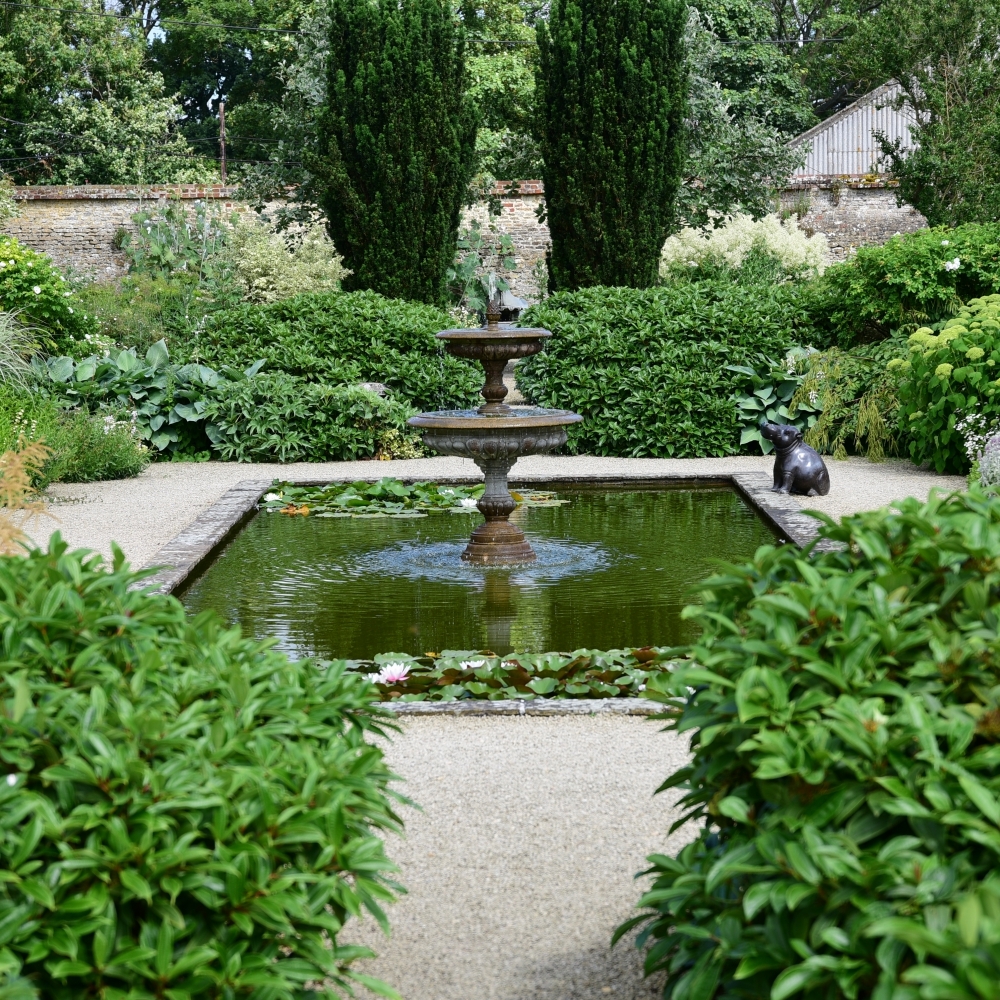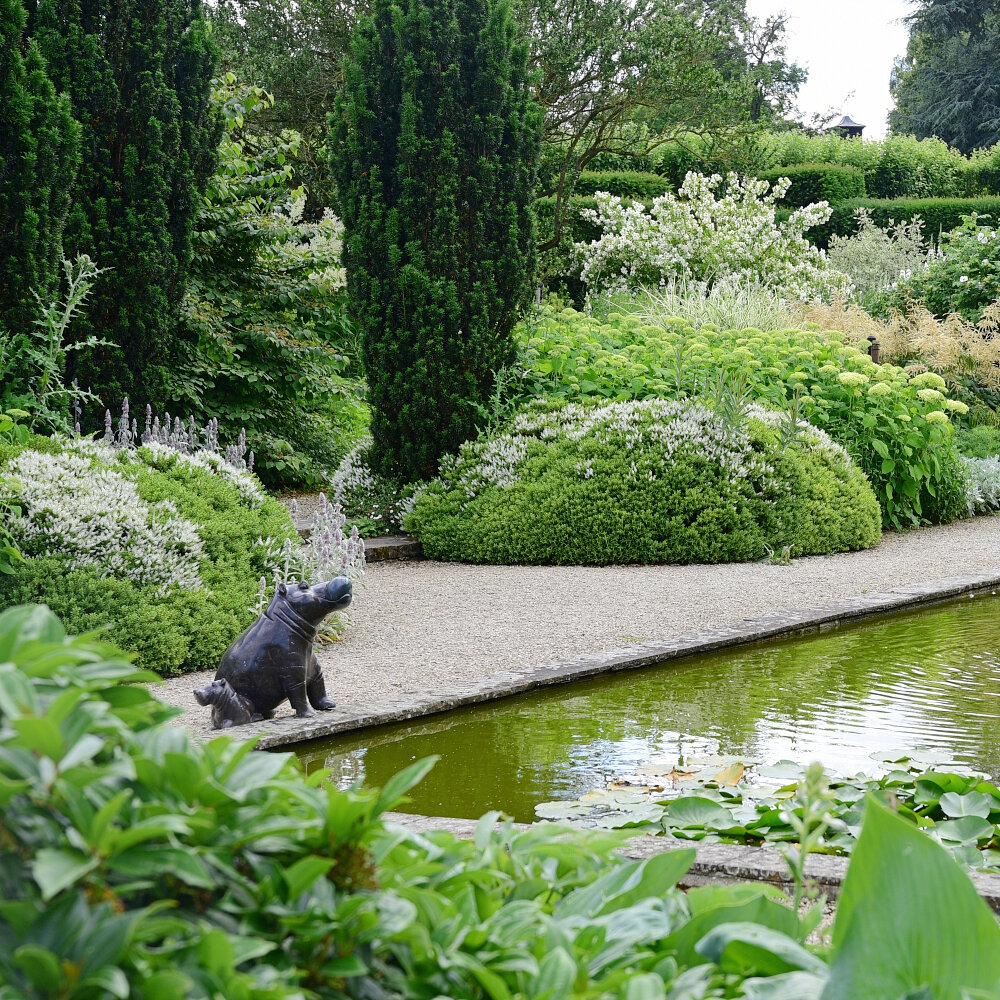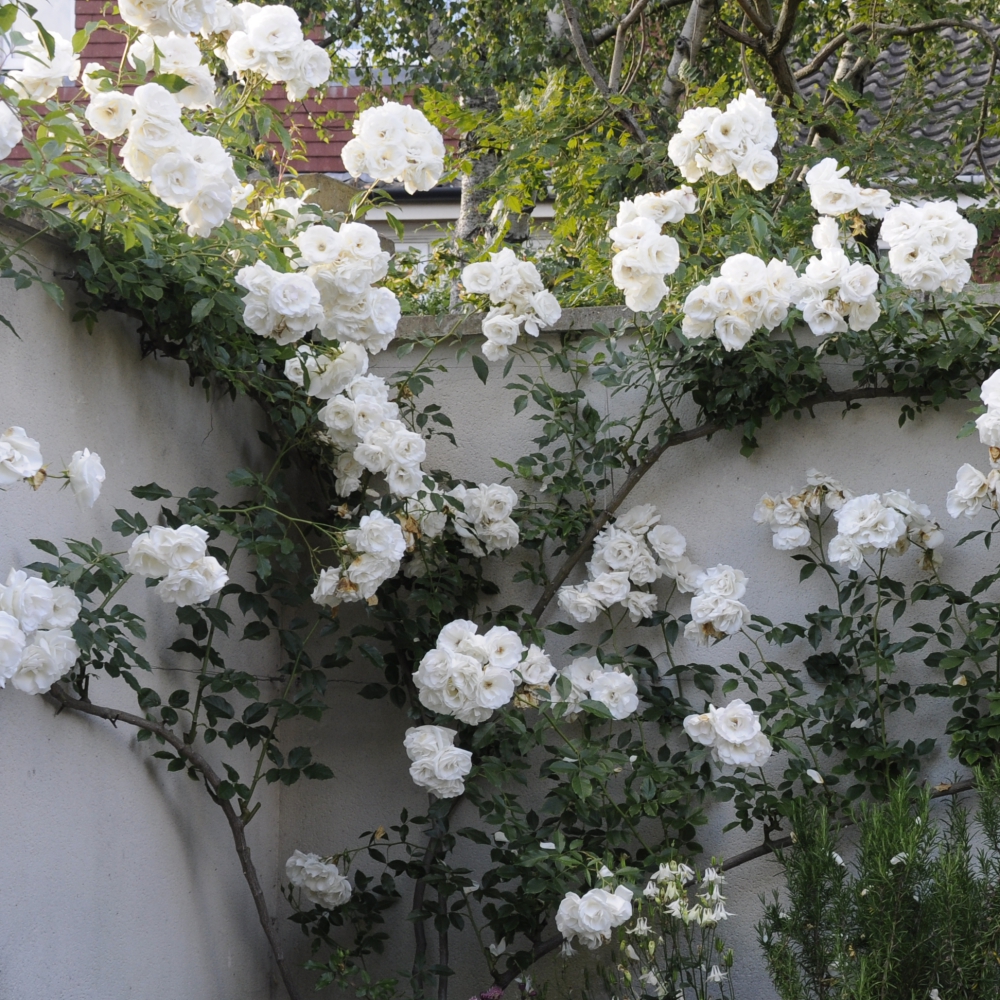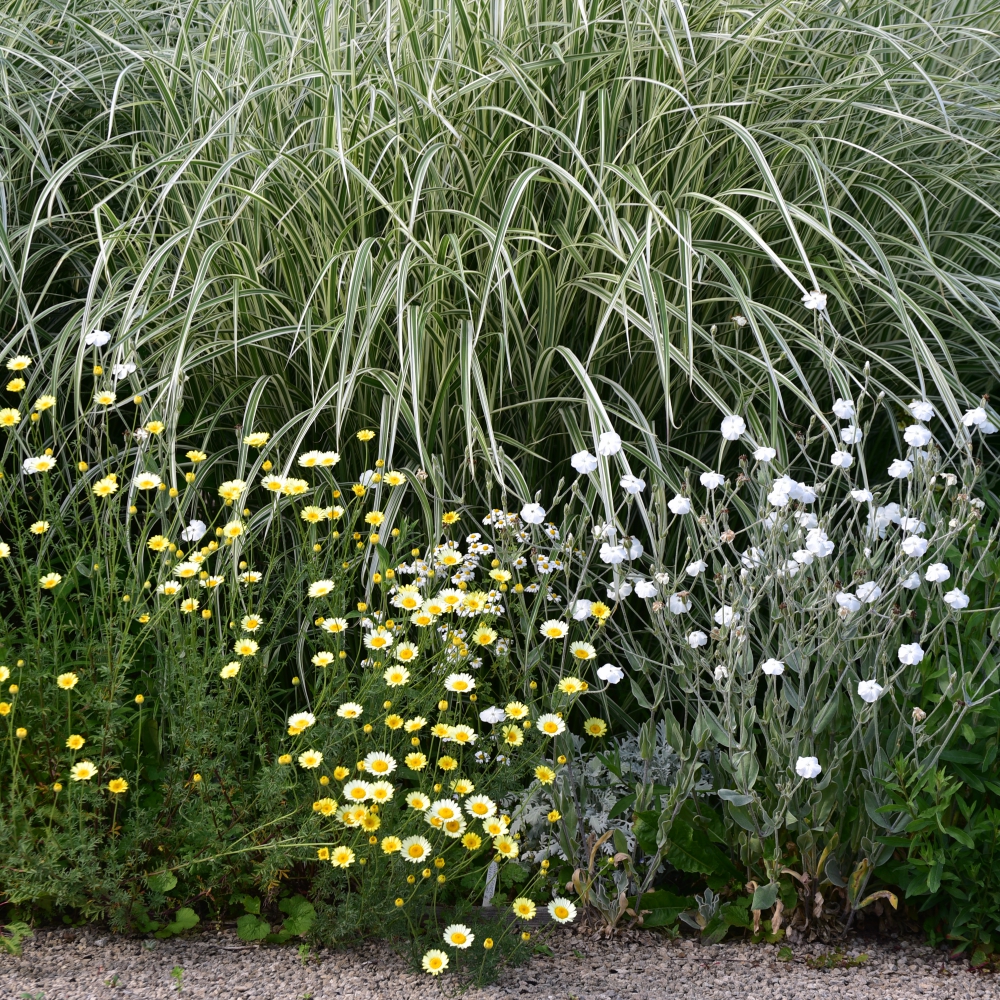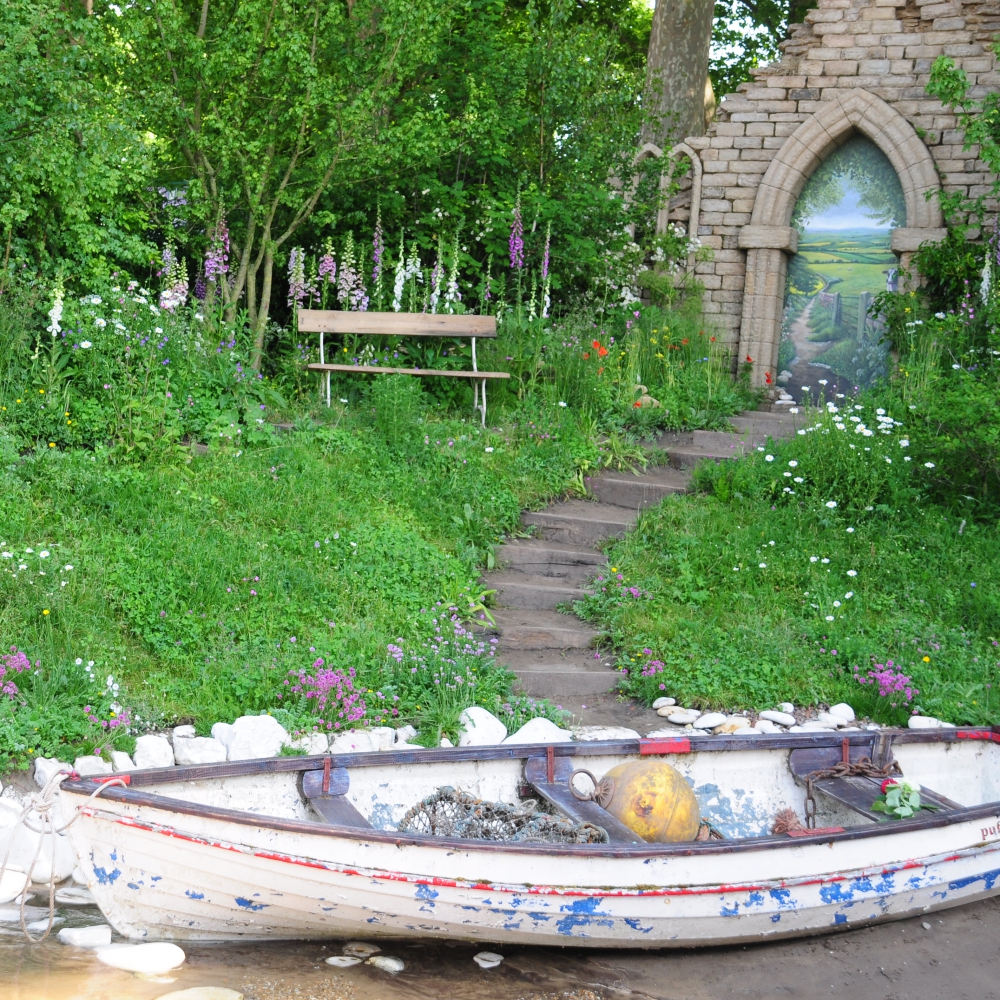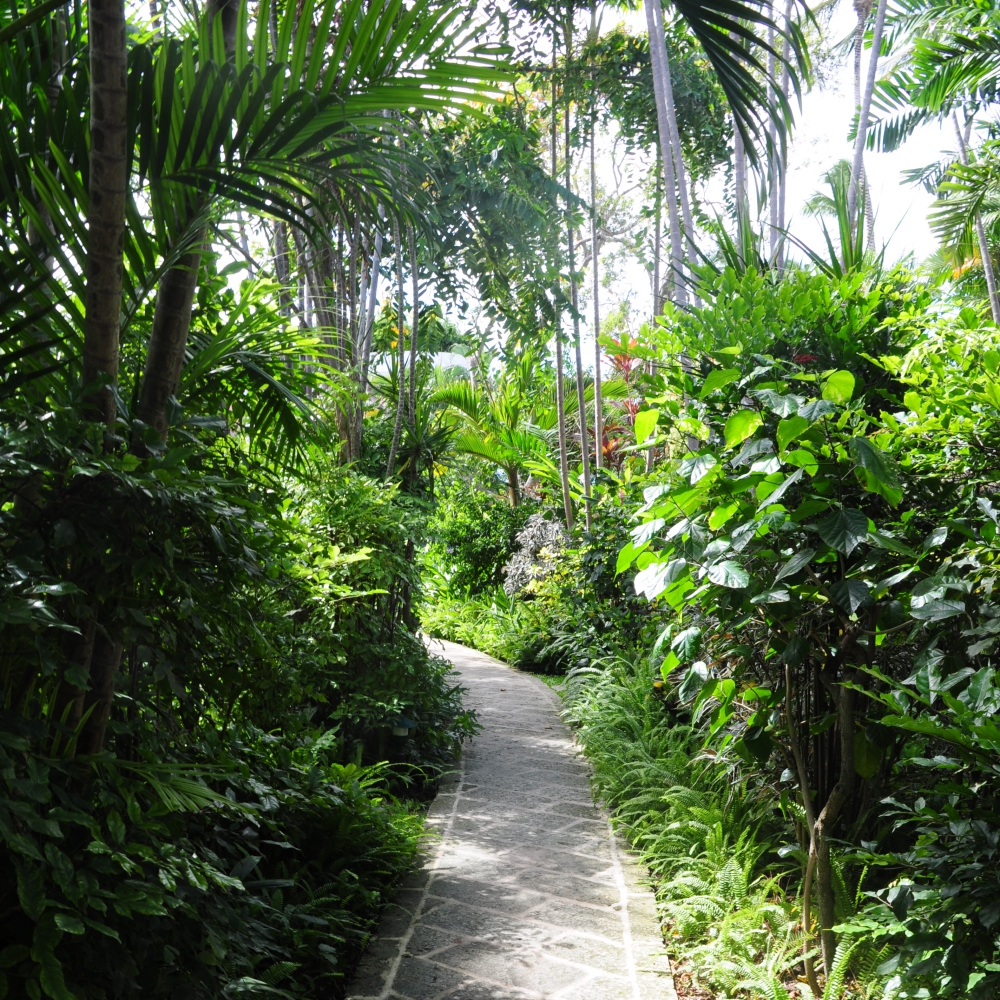My top ten garden books
It’s winter. I’m not a great one for curling up by the fire with a seed catalogue. They’re usually very wordy, short on pictures, with anodine sowing and cultivation notes. A book about gardens, or plants, plant hunting or gardening however, is much more cup of tea. But so much depends on the author and, naturally, the photographer.
First off, the books I use the most for my work. No, they are not technical tomes about soil composition of how to haunch the edge of a patio, but primarily books about plants.
The most thumbed book on my whole bookshelf is Right Plant Right Place by the late Nicola Ferguson. The phrase was first coined by Beth Chatto, if you plant something in the best possible position for it it (almost) can’t fail. And the most referred to chapters are those about planting in shade. London gardens are notoriously shady, be they in the shadow of tall buildings, neighbours’ trees or even their own fences. Every garden has got a slightly unloved corner where it would seem almost nothing will thrive. Beth Chatto might have had the number on planting under trees in her Woodland Garden book, but Nicola trumps her when it comes to dry shade and dense shade. Other valuable chapters are on plants for heavy clay soils and long flowering perennials.
Once I’ve made a selection for a garden I like to have a quick look at Christopher Lloyd’s Garden Flowers. No glamorous photos here but at times quite a witty take, and 70+ years of experience, on the delights or failings of many popular garden flowers. Recently, in looking for spring bulbs for a client I came across his description of Camassia quamash, “whose Indian (native American) name, quamash, indicates their edibility with its onomatopoeic, scrunching sound.” He admits to making that up but thought it should be true. Not that I agree with him all the time, one of my favourite flowers, the bright blue Catananche caerulea, is described as “a mildy pleasing but second-rate plant.”
The third of this trio of reference books is Barchams Time for Trees. Barchams is the tree supplier to the King, and the Queen before him. Obviously there’s some self-interest in this book and I was given it for free at a trade fair. However, it has lots of photos and good descriptions of hundreds of garden trees. It is particularly good at describing many different culitvars, I can’t tell you how useful this is when eyeing up several different varieties of cherries or magnolias say. It’s much easier to compare and contrast with a book than it is online.
Now for a bit of garden writing. I’m reminded of the quote that “writing about music is like dancing about architecture” and so how can writing really convey to the reader anything about a garden? The answer is, in the way that detective novels are fascinating but do not reveal the true awfulness of a murder, garden writing is enjoyable without actually having to get dirty or cold and wet or do your back in or weed that border for the nth time … Here are three that I’ve really enjoyed.
Back in the day when people actually wrote letters, and complete sentences, Christopher Lloyd and Beth Chatto enjoyed a very lengthy correspondence. Subjects ranged from writing about their own gardens, each other’s gardens, lots of other gardens, lots of (to my mind) unfathomable advice and there’s some terrific name-dropping thrown in too. The resultant book, Dear Friend and Gardener, is so good I’ve got two copies.
Sadly it seems most of the writers featured so far are no longer with us. Both Christopher Lloyd and Beth Chatto lived to ripe old ages at least, proving that gardening is indeed good for you. Elspeth Thompson, in the ordinary course of events should still be alive, but she suffered from depression and took her own life at the age of 49. Gardens can’t heal all it seems. She left two books, the first of which is The Urban Gardener, three years of Telegraph columns about the trials and triumphs in her garden and allotment in inner city London.
This brings me to my third choice for garden writing, Sue Stuart-Smith’s The Well-Gardened Mind. Sue is married to the Tom Suart-Smith (more of him later) and is a psychiatrist. In an age of well-ness, biophilia and other 21st century tropes, here is an evidence-led exploration of not only why gardening is good for you, but how gardening is good for you. Thankfully this is not a self-help book but is rewarding and uplifting with lots of case studies.
The final group of books are ones I turn to in need of inspiration or just a dose of garden porn if you like. None of these bears any relation to either my own garden or indeed the suburban gardens I design. I can but dream…
First up, Tom Stuart-Smith’s Drawn from the Land. Beautiful gardens and beautiful photography. The gardens range from award winners at the Chelsea Flower Show, London courtyards, country house gardens, a Moroccan paradise garden, arid Mediterranean hillsides and many gardens open to the public. I’ve been lucky enough to see a few of these in the flesh and he never disappoints.
Another monograph I’ve enjoyed is The Gardens of Arne Maynard. Much more associated, in my mind at least, with the gardens of ancient houses and landscapes. Unashamedly romantic and definitely not low maintenance, he particularly favours old fashioned roses, topiary and often features bucolic kitchen gardens. I’ve also seen a couple of his gardens, including his own in Monmouthshire which is one of my favourites. The photography, mostly by William Collinson, is lovely.
This next one is a bit left field and never in my wildest dreams would I ever be asked to design anything in this sort of landscape, let alone with this level of style and minimalism. The Desert Gardens of Steve Martino are designed and built in the semi-desert-like region of south-western USA. An early pioneer in the use of native plants adapted to the arid landscapes which are sometimes subject to heavy downpours, his gardens use walls to construct views and create privacy to making beautiful minimlaist outdoor rooms. If you want to see gardens which are the complete opposite of, say, Arne Maynard, this is the designer to look at. Fabulous photography by Steve Gunther.
My last choice, published earlier this year, is Wonderlands. Written by Claire Coulson and photographed by Eva Nemeth, it is an exploration of the gardens of some well-known and not so well-known British garden designers. I was in two minds about including this book as mostly I feel deep seated envy when I look at this book. Included are the gardens of Tom Stuart-Smith and Arne Maynard. Interestingly, few of these designers admit to having any plans for their own gardens. They’ve taken a more experimental and leisurely approach, unpressured by a deadline or a budget or a client brief. Even so, there are deep echoes of their professional work in their own gardens.
The Hepworth Wakefield Garden
I was not overly hopeful of enjoying the Hepworth Wakefield Garden. Often gardens that seem good looking on social media are somewhat disappointing in real life. And the long journey up the M1 had been dreary and wet, compounding my low expectations.
The Hepworth Wakefield Garden
So it was a really pleasant surprise to find that it was all it was cracked up to be and, not only that, the sun came out just as I arrived.
The garden was designed by Tom Stuart Smith and according to thee garden’s website the “design draws inspiration from its unusual setting between 19th-century red-brick mills and a 21st-century art gallery. It echos the striking, angular shapes of the David Chipperfield-designed gallery while harnessing a naturalism that reflects Barbara Hepworth’s deep connection to the landscape.”
Rhus typhina and Aconitum
Construction began in 2019 and is planted with 14,000 perennials, 120 metres of beech hedge, 52 trees and shrubs and 60,000 bulbs.
Rhus typhina and grasses
In autumn the main features of the garden are the brilliantly-leaved Rhus typhina, grasses and various asters, all looking really good backlit by low autumn sun. I can’t say that Rhus is a favourite plant of mine, it has a tendency to sucker and spread, but in autumn the colour is hard to beat.
Rhus typhina
Phlomis russeliana seedheads
Asters and Echinacea seedheads
I sometimes find it hard to persuade clients that it’s worth planting for autumn colour and form. Despite the much-lauded value of grasses and seedheads it’s not until people see gardens like this in autumn that they become convinced.
Pennisetum and Salvia (formerly Perovskia) Little Spire
Back-lit grasses and asters
Euphorbia and Echinacea seedheads
More grasses and asters
One plant I was delighted and surprised to see in a public garden was the bright blue Aconitum. I’m not sure which variety it is but it’s stunning in the half shade under an oak tree. Most Aconitum are poisonous and although some have AGM status they should always be handled with care; ingesting even a small amount can make you seriously unwell and can cause death. Here it is placed well back in the border and does not overhang the lawn or paved areas.
Aconitum, to be handled with care…
There is a small cafe in the garden (closed when I was there) and a cafe inside the gallery. The garden is free to enter, though you do have to pay for parking close by on the other side of the River Calder.
Sculpture by Michael Craig-Martin
Long view
Fading into beautiful light
It was well-worth the long schlep up to Wakefield (on my way to meet up with friends really…) and proved every bit as good as it looks on Instagram - @katymerrington. It is beautifully maintained by cultural gardener Katy Merrington and a team of volunteers.
Wimbledon Common in winter
It’s been a cracking winter in London, if you enjoy landscape photography. The prolonged period of frost in December, followed by the snow, produced some lovely conditions for photography. And another period of frost in January was a bonus. If this sounds like a wierd thing to celebrate, especially as every sub-zero day adds considerably to your energy bill, last winter there were no frosts at all. A whole winter of grey, wet dreariness…
“Good” wintry conditions are obviously frost and snow, ideally coupled with fog or bright, low sun. Its amazing how different the same scene can look in different conditions.
Wimbledon Common in autumn
Photographs of Wimbledon Common in autumn
I don’t know why but I always seem to go to Wimbledon Common much more in the autumn than any other time of year.
I cycled across it a lot, particularly during the first half of the first lockdown when Richmond Park was closed to cyclists and you were only allowed to exercise for one hour a day. But cycling and photography aren’t really compatible so it’s only in the autumn when cycling’s less fun that I go with my camera.
The foggy days have been a real treat, even if it is a bit of a struggle to get up when it’s dark and cold. Now I’m waiting for some hard frost (no snow, thankyou).
Green & Gorgeous Flower Farm
I found out about Green & Gorgeous in a magazine and paid a visit on a Saturday late in June. It was a blisteringly hot and eyeball achingly bright day. Not ideal for photography but hey it was a bit of a trek to get there so I had to make the best of it.
On arrival I was sent off to the sweet pea borders. If ever there was proof that if you’re going to do sweet peas properly you’ve got to plant an awful lot of them then this was it. I could smell them before I could see them. Unfortunately my photos of the sweet peas weren’t very good but if you scratch your screen here you can smell them.
Although the main business here is growing flowers for cutting, particularly in summer in full wedding season, Green & Gorgeous is open on Saturdays for you to pick your own sweet peas and select just-picked stems and produce in the shop. Some perennials are also on sale.
I asked if they minded me taking photos and they didn’t so off I wandered. It was a very pleasant way to spend an hour or so, it was just a shame there wasn’t really anywhere to have coffee. Maybe there was but the poor lady in the shop was on her own and I didn’t have the heart to ask as she was pretty run off her feet.
As well as creating floral bouquets for events they also run courses on topics ranging from how to set up and run a flower farm business to flower arranging, and garden photography with Eva Nemeth.
The photography on their website is lovely and the Instagram feed is pretty impressive too. It was great to see a successful business selling local, seasonal produce that doesn’t have a huge carbon footprint.
For those of you desperate for a coffee or other refreshments there’s plenty on offer in nearby Wallingford or Goring & Streatley (if you can find somewhere to park).
Green & Gorgeous - https://www.greenandgorgeousflowers.co.uk
Did anyone scratch?
Wimbledon planting project
In the summer of 2017 I was contacted by A and M and asked to design a new planting scheme for their back garden.
Although the lawn was in very good condition, and even had a mowing strip, most of the rest of the planting left quite a bit to be desired.
Some of the shrubs had been pruned in a supermarket carpark style and the weeds had been left to their own devices for quite some time. There were also a couple of dead and dying trees to take out.
We had a huge clear out of most of the shrubs, a tree surgeon took care of the dead and dying trees, grinding out the stumps where necessary, and then followed the mother of all weeding sessions. Finally the garden was ready for planting.
The colour palette was based partly on some of the plants already in the garden, mostly blue and purple. The rest of the scheme was a cheeky combination of white, orange and dusky pink.
There wasn’t much to see in the first autumn but by March, despite the Beast from the East, and the Mini-beast, the bulbs were making a brave appearance.
The first of the perennials to get going was Geum Totally Tangerine, so good it flowered twice. This was followed by Papaver Patty’s Plum, almost good enough to eat.a
Despite the scorching sunshine and relentlessly high temperatures, and thanks to a lot of watering the rest of the perennials flowered through June and July.
The weeding was relentless. That’s what happens when weeds are left unattended and then you fertilize the soil and water the germinated seedlings.
Some plants, including the delicate Echinacea pallida, suffered at the paws of a youg dog. And some were trampled to death, yes really, by pigeons scavenging underneath the bird feeder.
The planting has performed really well, despite the extreme weather of 2018. Now in September, it’s still looking good.
We’re looking at doing a bit of editing. Some parts of the garden are shadier than I thought, and some drier, even though there’s an irrigation sytstem. And some of the plants savaged by the puppy need to be replaced.
But this is all part and parcel of gardening. Nothing stays the same, some things do better and some things do worse than you expect.
I’ll leave most of the perennials standing through the winter and cut them all back in February. That will be a good time to move some of the grasses from the shade to the sun.
Fingers crossed there won’t be quite as many weeds in 2019, and hopefully the weather will be a bit more benign….
The Homewood
The Homewood is a modernist house by the architect Patrick Gwynne. He was just 23 when he designed the house for his parents in 1938. Luckily for him they already owned a Victorian villa on the 10 acre estate just outside Esher in Surrey.
In another stroke of luck, his parents were able to sell a small town in Wales to pay for it. As anyone who's ever house-hunted in Surrey knows that's what it takes to secure a small bit of real estate here, then and now.
The Victorian villa was demolished and the new house located to make the most of the views of the garden, and views of the house from the garden. Patrick Gwynne lived here most of his life and left the house to the National Trust.
Gwynne made some updates to the house throughout his life but kept fairly true to his original vision. In the garden, this terrace was added in the 1970s, not an era particularly respected for its contribution to garden design (maybe concrete paving will make a comeback...?).
The angular swimming pool is a success though, and is still in use by the current tenants. The water is crystal clear, illuminating the green tiles. The later addition of a curvilinear pond with bright blue tiles doesn't work as well.
Just glimpsed from the house is a series of ponds. Gwynne was able to dam a tributary of the River Mole to create these reflecting pools and a bog garden.
The garden guide pointed out that a condition of National Trust ownership is that every garden should have a Gunnera manicata. I'm inclined to believe he wasn't joking.
Following the construction of the house some editing of the garden was carried out, with a few trees being removed or having their lower limbs pruned, to improve the views. Some of the tree stumps are used as sculptural pieces in the garden.
This part of Surrey is known for its sandy, acidic soil and this is reflected in the planting - lots of heather, pines, Japanese maples and silver birch trees.
It was Gwynne's aim to blur the boundaries between the garden and the relative wilderness of neighbouring Esher Common. Gwynne's ashes are scattered in this part of the garden.
To see the garden you have to book a house tour. The house is only open to visitors one day a week for a few months a year so you need to be organised.
A short garden tour is also on offer after the house tour. Be warned though, if you are booked on the last house tour of the day there is not much time to see the garden properly.
I was hoping to sneak round the back of the ponds get to get a photograph of the house reflected in the water but was chased down by the guide and asked to leave - this was disappointing to put it mildly.
The house was really interesting and fans of mid-century modernism would not be disappointed. The garden was much better than I expected so it was shame not to be able to spend more time in it. It would be good visit in spring when the Rhododendrons are in flower, or in October when the heather is in flower and the Japanese maples are changing colour.
You can't take any photos inside the house but you can see some here -
http://egondesign.co.uk/my-dream-home/
There are no facilities (tea, cake or loos) here but Claremont is nearby and the cream tea is excellent (thankyou Desna).
The Temperate House at Kew
The last time I was at Kew the Temperate House was still being renovated. It reopened in July after a five year restoration project.
Like The Palm House, it was designed by Decimus Burton and opened to the public in 1863. The Temperate House is twice the size of its neighbour and is the largest Victorian glasshouse in the world.
As the temperate zone is where most of the world's population lives many of the plants here face the combined threats from climate change and human population growth.
Indeed The Temperate House contains the only known living specimens of some plants. Like Encephalartos woodii, a cycad from South Africa. Only one has been found in the wild and an offshoot was sent to Kew in 1899. It is a male and no females have ever been found.
The Temperate House is divided into zones representing Australia, New Zealand, the Americas, Asia, Africa, the Himalayas and 16 islands. Many of the species housed represent human, animal and insect food, garden plants, plants with cultural uses, plants used in building, manufacturing and medicine. Kew safeguards their future by banking the seed at its Millennium Seed Bank in West Sussex.
The light in The Temperate House is beautiful. On a sunny day the shadows from the structure run across the leaves and paving. As the plants grow this will probably become less of a feature. For now though it looks very modern, if only more conservatories looked a bit like this.
As part of the renovation there has been an effort to make the glasshouse more of an experience than just a scientific collection, with a waterfall and a dramatic collection of tree ferns running along a dry riverbed.
The Temperate House contains plants not quite hardy enough to survive an English winter. However, I think with the right care and location in your garden, in London you might risk planting tree ferns. The false banana, Ensete ventricosum below, and exotic gingerlilies, would defintely need to be brought inside though. That's fine if you've got somewhere suitable to house it, otherwise best leave it to Monty Don.
To truly appreciate the splendour of the architecture you can climb the spiral stairs to the gallery and get a view of the central area.
I look forward to seeing how the planting develops. It's almost worth the £17 entry fee to Kew Gardens on its own.
The Temperate House - https://www.kew.org/kew-gardens/attractions/temperate-house
Loseley Park
Loseley Park, home of the eponymous icecream, has been lived in by the More-Molyneux family for over 500 years. The house, set in 400 acres in Surrey, was built in the 1560s. Its walled garden was set out in the 16th century, re-designed by Gertrude Jeckyll in the 19th century and was redesigned again in 1991.
Of course there's a rose garden, with over 1,000 roses, and a vegetable and cut flower garden.
But in high summer it's the various flower gardens that really grab your attention. The Flower Garden is designed with hot colours in mind, but these only develop in late summer. Now there is a tasteful palette of blue and yellow.
I like the way the plants are packed in, those with looser structures like Geranium pratense and Cephalaria gigantea scramble through evergreen Buxus and Euphorbia, with the frothy Alchemilla mollis skirting the floor.
Sissinghurst is not the only white garden in the country. The one at Loseley Park is based around a tranquil pond. It's no surprise this is a popular place for weddings.
One of the things you notice about the White Garden is that not all the plants are white. There are creams, silver, pale yellows, pale pink, dark greens and plenty of variegated leaves.
One of the more unusual features at Loseley Park is the moat. It's not clear what function it has served but it's now planted with water lillies and Gunnera and home to at least one mallard family with no less than seven ducklings.
From the moat there's a short walk through the Rose Garden. At the end of June most of the roses are in full bloom. There was a sculpture display there when I visited. The overall impression was marred somewhat by the sorry-looking box hedge. I couldn't tell what was causing the problem but they have my sympathies, it's getting harder and harder to keep box looking good.
The Tennis Court Border would have been easy to miss as it's a bit out of the way.
Again there's a blue and yellow theme here, with the full range of Verbascums, from the statuesque V. bombyceferum to the more delicate V. chaixii. It can't all be in good taste though as these poppies were unlikely to have been blue or yellow.
The stone walls make an attractive backdrop. I was surprised there weren't more climbers in the garden. There is a magnificent and ancient Wisteria but it was obviously not in flower now. There are a couple of roses but really there is the potential for so much more.
There are tea rooms aplenty here but unlike these two I didn't have time even to taste the icecream let alone sit down.
Loseley Park - http://www.loseleypark.co.uk/
You need to plan your visit. There is a tedious diversion in place to get there until the end of July 2018, and the house and gardens are not open on Fridays or Saturdays.
How to make a white garden
If you've been inspired by the white garden at Loseley Park or Sissinghurst or just by the idea this will help you plan one.
First off, you've got to be committed. There's no point going 95% of the way and then throwing in a magnificently lurid Dahlia you've seen on Gardener's World or The Daily Telegraph.
Next, you need some strong, structural evergreens. Nothing sets off white flowers like dark green. And it's good to have some structure in the winter and to form a backbone to the garden. At Loseley Park they've used Viburnum davidii. It doesn't get too large and keeps a nice shape. You could also use Buxus sempervirens (box) or Taxus baccata (yew).
Something tall and willowy at the back of the border will add some height. Veronicastrum virginicum Album would fit the bill, as would Epilobium angustifolium Album or Digitalis purpurea Alba which would be good for a slightly shady border.
Working your way forwards, Anemone x hybrida Honorine Jobert is a reliable late summer flowerer. It can take a while to get going but its wiry stems will weave their way through other foliage.
One of the things you'll have noticed about most white gardens is that they are seldom all white. Touches of pale pink, grey and pale yellow add some depth to the scheme. This Allium Decipiens does just that with globes of the palest pink in late spring. Other pale pinks to think about include the fluffy spikes of Stachys byzantina and Linaria purpurea Canon Went with its delicate spires.
If you're lucky enough to have a good wall or fence don't forget about adding in some climbers - Rosa Iceberg flowers on and off all summer. And Tachelospermum jasminoides does several jobs - it's evergreen and produces masses of scented white flowers in July. Try a clematis to get an early start such as Clematis montana Henryi.
Variegated foliage is frequently used in white gardens and this Miscanthus sinensis Varigatus adds movement in a slight breeze, some structure through the winter and works really well with the pale yellow Anthemis tinctoria Sauce Hollandaise and the white flowers and grey stems of Lychnis coronaria Alba.
Other variegated foliage plants to consider are Cornus Elegantissima, Pittosporum tenuifolium Golf Ball and Euonymus fortuneii Emerald Gaiety. Do check the ultimate size of the plants before buying ...
You want to get the white garden off to an early start so bulbs are a must. My favourite, Tulipa Spring Green looks great with Narcissus Thalia or N. Actaea. Other white tulips include T. White Triumphator and T. Tacoma.
Following hot on their heels are Astrantia major Large White, liking not too much sun and a bit of dampness. Astrantia major Buckland has a slight pink tinge. You'll need to plant a few of these fairly close as they take some time to fill out, worth the wait I think.
And finally, if you're after an end of season show stopper then it's got to be a hydrangea. This one's H. Emilie Mouillere which fades to a lovely pink colour. Another favourite is H. arborescens Annabelle with enormous green/white flowerheads if it gets enough water.
If you've not the space for a hydrangea this is the point at which you can add in a Daily Telegraph dahlia, but make it D. White Star or D. Lady Kate or D. Bishop of Dover.
One thing to remember about white gardens, charming as they are, if you don't dead head regularly it will all look rather brown and ugly as the flowers fade.
Chelsea 2018 - First impressions count
Did you enjoy the tv coverage of the Chelsea Flower Show this year? There was certainly a lot of it. I try not to watch too much before I to go as I like to be surprised and make up my own mind about the garden designs.
As I walk around I hear lots of comments as people see the gardens for the first time. Many people have Marmite reactions when they come across the gardens, they seem either to love them or hate them.
Mark Gregory's Welcome to Yorkshire Garden got a definite "love it" reaction, as did Hay-Joung Hwang's LG Eco City Garden. The former is an idealised version of the countryside where the garden is just a light touch (although a Yorkshire farmer told me you'd never see Wisteria like that on a farm building) and the latter is an aspirational outdoor room.
Nic Howard's garden for David Harber and Savills Garden rather got the opposite reaction. Apart from enjoying the view through the rusty structures visitors didn't really get it as a place to spend time. The same was partially true of Jonothon Snow's Trailfinders Garden. Visitors were immediately attracted to the cottage garden part of the design, but it was only those who'd seen the tv coverage explain the burnt appearance of the native fynbos who appreciated the garden as a whole, as part of the wider South African landscape.
The back story is an important element of the design brief for each garden, and a major part of what the judges are looking at. For many of the gardens this design intention is pretty complex and one that escapes the casual glance. For example, Charles Stuart Towner's Spirit of Cornwall garden included metal screens reflecting the sound waves of music composed in the pavillion, and the water features echo the sea views from Barbara Hepworth's studio in St Ives. Did you get that?
One garden that made almost no impression on me was Chris Beardshaw's best in show garden for the NSPCC. It may well have represented a metaphor for an emotional transition through the actions of the NSPCC but the way it was designed meant visitors had a very poor view of the garden. The pavillion was huge and the tall and dense planting along the boundaries. coupled with a wall in the middle meant you couldn't really see into the garden. Mind you it looked great on tv.... but what's the point of building a show garden that just looks good on tv?
The brief for Jo Thompson's Wedgewood Garden was refreshingly uncomplicated - a garden for taking tea. Who can't relate to that? However, it was only as I was writing this that I found out the garden was designed for women. Any men out there with a view on that?
Some gardens are just a joy to see, on first glance and with further study. One of these was David Neale's garden for Silent Pool Gin. Following the disappointment of realising there was no free gin on offer there was plenty of delightful detail to enjoy. I think most people get that gin is made in copper stills, what more do you need to understand here?
In contrast, Tom Massey's garden for the Lemon Tree Trust didn't make much of a first impression. A combination of concrete, recycled metal, old plastic bottles didn't make for the most appealing garden. However, I was drawn back to it several times during my visit, intrigued partly by the ingenuity of gardeners working in adversity, in a refugee camp, and also by the planting. It featured a recycled lemon tree (used in a Chelsea 2017 garden) and a pomegranate tree, which I'd never seen before.
Even the most bonkers garden, the Wuhan Water Garden by Laurie Chetwood and Patrick Collins, had some sublime moments. The hi-tec fountains and mist spray created an atmosphere of mountainous forest, but you had to get down on your hands and knees to appreciate it.
And finally, my favourite garden, Sarah Price's garden for M&G. Again the premise is simple, a garden is a haven which just needs a wall, a seat and a tree. It looked great on first sight and with each time I looked at it there was more to see. The detail of the construction and the sparse planting plus, another pomegranate tree added up to a gold medal. This was my best in show.
The food and drink on offer has improved somewhat over the years Ive been going to Chelsea. The food courts though are always hugely busy, often with long queues and it's hard to find somewhere to sit. Take a picnic and treat yourself to an icecream.
Lukesland Gardens
I feel very lucky to have friends with friends with amazing gardens. Last weekend I stayed with John and Lorna Howell, owners of Lukesland in Devon.
The garden covers around 26 acres of woodland, streams, arboreta (there's more than one), rhododendrons, azaleas, wild flowers and a kitchen garden.
The garden was started by the Matthews family in the 1860s, followed by the McAndrews in the 1870s, but has been tended to and developed by the Howell family since the 1930s.
The garden has become known for some of its "Champion" trees, which means they are the oldest, tallest or with the largest girth in the county or country. The high level of rainfall, acidic soil and mildish climate makes it ideal for Camellias, Rhododendrons, Azaleas and Magnolias.
.I was told the Rhododendrons were past their best by the end of May but they still looked pretty good to me. However, this is prime Azalea flowering time, the reflections in some of the ponds were particularly stunning, better than the Isabella Plantation I think.
For me the streams and ponds are the highlight of the gardens. Addicombe Brook tumbles through the garden over cascades and Dartmoor granite rocks. It's not without hazard though as floods in recent years have washed away paths, bridges and sculpture and silted up ponds. They've been rebuilt and restored and you'd never know there'd been such devastation.
The wild flowers are also particularly attractive. There are bluebells in the Beech wood and in the Pinetum where they flower in the open with grasses, and along the stream with Red Campion.
The dampness means plants like Iris sibirica, asiatic Primulas, Gunnera and ferns thrive here, as well as some of the trees like the giant coastal Redwoods from the USA.
Lukesland is particularly well known for its three large Davidia involucrata, also known as the Hankerchief Tree, which were flowering during my visit. Unfortunately none of my photos could do them justice but if you're in the area in late spring seeing them is worth a visit on their own.
Although the tea room was busy (and yes I can recommend all the cakes as I tried most of them whilst serving the tea...) the gardens are so large it's easy to find a quiet spot to yourself.
One of the advantages of staying overnight is the opportunity to get up at the crack of dawn and wander around on your own, although the weather conspired against me and I didn't quite get the mist and low sunlight I was hoping for. Next time maybe...
The gardens are only open in the spring and then again in the autumn as the foliage of the Rhododendrons, Azaleas and Acers is stunning I'm told.
This garden is maintained by Lorna and John, John's mother Rosemary (who runs the guided tours) and three very part-time gardeners. Hats off to them all.
Lukesland - http://www.lukesland.co.uk/Index.htm
You can rent a cottage in the grounds - https://www.helpfulholidays.co.uk/cottage/Devon-East-Anstey/The-Clock-House-976251.html
Many thanks to John and Lorna and Rosemary and Desna (and Rob..).
2018 - A good year?
Is 2018 - a good year to remember, or not? Maybe not for some reasons, but, politics aside, ignoring natural and man-made disasters, bad tempers and bad news in general, here is the good news round up of 2018 in the small corner of the world occupied by Arthur Road Landscapes.
A new year, a new day and a new camera on the beautiful island of Barbados. Not too much in the way or horticulture here but when the landscape looks like this who needs a garden?
But of course I couldn’t resist another visit to Hunte’s Gardens.
Having cleverly avoided the Beast from the East, but running full pelt into the Mini-beast, I made a beeline for the Palm House at Kew for a bit of warmth and humidity.
The cold winter and the sudden arrival of a very warm, but late, spring (who knew what was to come?) meant a very good year for bluebells. This little woodland of oak and ash was discovered by my parents in deepest Berkshire.
May means Chelsea. This was my favourite garden, by Sarah Price. Not everyone’s cup of tea, but definitely mine, I’m just waiting for a commission for somewhere in the Med…
At the end of May I visited Lukesland on the edge of Dartmoor. Spring was a little later here so this Wisteria was still in its full glory.
June sees the climax of our native wild flowers. Driving around Surrey I love the road side verges covered primarily in ox-eye daisies. Parts of the M25 are quite spectacular, something to enjoy whilst sitting out a traffic jam. It’s quite tricky finding somewhere to park and photograph them (I haven’t stopped to take any photos on the M25 I hasten to add).
The heat wave started around the middle of June I seem to remember. I went to Loseley Park before the weather began to take its toll and the White Garden here was looking splendid. Of course the thing about white gardens is that they’re not completely white.
July and August seem to have been swallowed up in a blaze of sweltering heat and guilt about using a hosepipe (sorry/not sorry) but at the end of summer I went to The Homewood in Surrey. I hadn’t expected much of the garden but even I was charmed by the heather, Scots pines and rhododendrons.
A very busy autumn meant little time for visiting gardens but I did manage to get the odd half hour or so on Wimbledon Common. Being outside in bright sunshine whenever possible is my way of dealing with short days and long dark nights.
This is beginning to sound like I haven’t done much work in 2018. Well it’s been a funny old year, a mixture of feast and famine. This sweet little courtyard in Twickenham was completed early in the year. The owners are bird mad so hopefully this spring will see a few new residents in the bird boxes.
A large back garden project which has taken a couple of years, was finally planted in October. There’s not too much to see plant-wise at the moment but I’m looking forward to seeing it develop next year.
Maybe not a vintage year but not a bad one either.
Like these photos? Follow me on Instagram.
A different view of Barbados
I had another fabulous holiday in Barbados this year. Here are some of my favourite photos, possibly not the sort you'd find on a holiday website.
Chelsea 2017 - the best bits
I don't quite know when the RHS knew that some of it's most constant sponsors had pulled out of the 2017 show, but there was no attempt made at reducing the ticket prices. However, it was still sold out.
In theory this should have been a good year for some designers as arguably there was less competition. There was only one really big gun in the world of tv horticulture - Chris Beardshaw. But even though his was clearly the most popular garden with the public he could only garner a silver-gilt. I didn't see enough of the tv coverage to find out why but if I had to guess I would say the planting was a bit "busy". Though this is precisely what a lot of people liked about the garden - the sheer range of colour, texture and form.
It was a garden of two halves, one bright and colourful, the other more textural and green. It was impossible to get a photo of the garden as a whole, mainly because the crowds here were the deepest and most constant through the whole day I was there.
Best in Show went to James Basson, a designer based in the South of France. In the well-known game, I have only two degrees of separation to James Basson as he is designing the Provence garden of one of my London clients.
His gardens are rarely everyone's cup of tea as they are based on Mediterranean plants put together in a sustainable way that requires very little in the way of soil improvement or irrigation. This is precisely what my client wants for her new garden, but it's not exactly traditionally "English". This garden rekindled the debate about where gardens end and wild landscapes begin. In an era of increasing awareness about sustainability in general and the effect our changing climate is having on gardens in particular this is a trend that is likely to continue and develop.
One garden that combined traditional English with a wild landscapes was the Welcome to Yorkshire garden. I've not been to the bit of the coast, Whitby, that this garden represents but I find it hard to imagine how this would survive some typical "northern" weather. I loved the boat but the mural in the folly was quite naff.
Newcomer Charlotte Harris's garden for Royal Bank of Canada was also based on an interpretation of a wild landscape. I really liked this garden (even though it was difficult to photograph) and it would be easy to imagine it sitting well in parts of Scotland that have brief but intense summers with very long days.
One of the key plants in the Royal Bank of Canada garden was the Jack Pine and 2017 was surely the year of the pine in its many forms. The Radio 2 gardens were a welcome addition to the repetoire at Chelsea and helped fill some of the gaps left by fewer main show gardens. I particularly liked the Texture Garden designed by Matt Keightley.
One of the most regular designers at Chelsea is Kazuyuki Ishihara. Ths was another garden that was really popular with the Chelsea visitors. It is an exercise in the minature with each detail exquisitely crafted, demanding close attention.
I'm no expert on Japanese gardens other than knowing they are usually a stylised representation of nature and man's place in it. This garden was one an increased number of Artisan's gardens, demonstrating the combination of traditional skills with horticulture.
i thought the overall standard of the Artisan gardens was higher than usual and some of them were entertaining. Some of my favourites included Dr Catherine MacDonald's garden for Seedlip. The copper piping weaving through the planting was fun.
The metal work continued into Graham Bodle's reclammation of an industrial site into a garden. I love a bit of rusty metal... and look, more pines.
'm normally a big fan of Sarah Eberle, a former winner of Best in Show. This Viking Cruises garden didn't do much for me but I did like some of the plants, particularly this cactus.
For my final garden there is only one degree of separation. The Breaking Ground garden was designed by Andrew Wilson and Gavin McWilliam; Andrew was my tutor when I studied garden design. The duo finally won a gold medal with this garden after several near misses (somewhat painful for Andrew who is a former head judge at Chelsea). It just shows what you can do with a lot of experience, a loyal sponsor, determination and ambition. And, what is that tree in the background?
Cobblers Cove Hotel
Every year the Barbados Horticultural Society manages to persuade some of its members to open their gardens to the public. The last open garden of the year was the Cobbler's Cove Hotel in St Peter.
Every year the Barbados Horticultural Society manages to persuade some of its members to open their gardens to the public. The last open garden of the year was the Cobbler's Cove Hotel in St Peter.
his boutique hotel is owned by the Godsall family. The garden is as much of a draw as the luxurious rooms and beautiful setting on the coast
The garden has undergone a gentle upgrade under the eye of garden consultant Niki Farmer. From my conversation with her it has been an enjoyable job, despite the fact the owner doesn't like yellow flowers or variegated leaves.
All the rooms and suites open out onto or look over probably the most immaculate garden I've ever seen.
There are many tropical and meditteranean plants and flowers familiar to us in the UK, usually as house plants, such as Bourgainvillia, Brugmansia and dozens of different palm trees.
Some are less well-known, as plants anyway, such as this Ylang-ylang tree, whose flowers are used in many perfumes.
One of the guests had not checked in but was making himself at home anyway. I was just dying for this green monkey to nip in to the room and help himself to the hotel soap, but he was very well behaved.
The green monkeys are not native to Barbados but come orginally from Gambia and Senegal. Over 75 generations they have developed different behaviours and characteristics to their ancestors.
Its amazing to think this garden is just a few metres from the beach. Shelter from the prevailing winds, plus plenty of sunshine and rain, makes Barbados gardens lush. Large trees can reach maturity in just 25 years.
Brightly coloured flowers can co-exist in close proximity with shade-loving ferns, something that's almost impossible to achieve in the UK.
Of course there were refreshments. Tea, naturally, iced-coffee and, rarely to be found in an NGS garden, rum punch. The icing on the cake was a plentiful supply of fresh Bajan fish cakes, so hard to find after the strange disappearance of the world famous fishcake stall from Speightstown.
Cobbler's Cove Hotel - http://www.cobblerscove.com/
Niki Farmer doesn't have a website but I'm guessing she can be contacted through the Cobbler's Cove Hotel.














